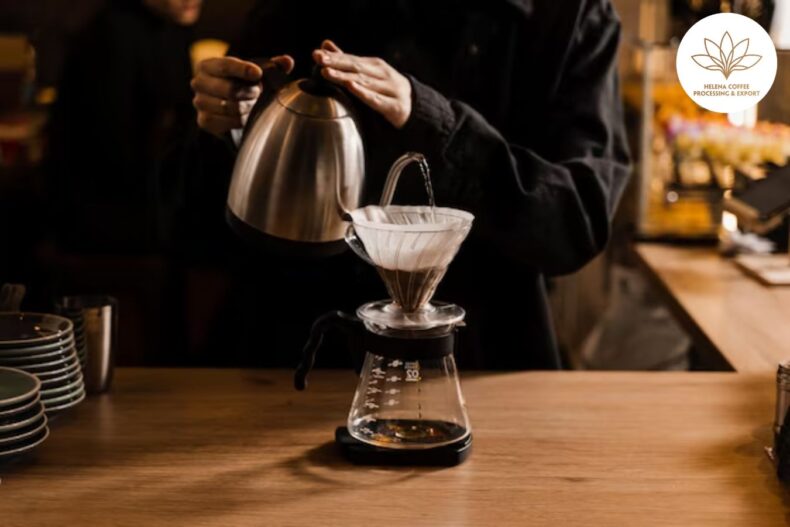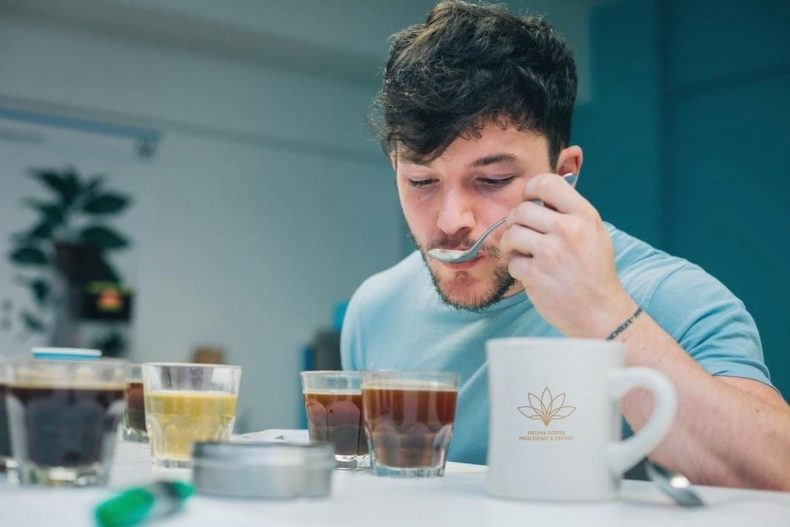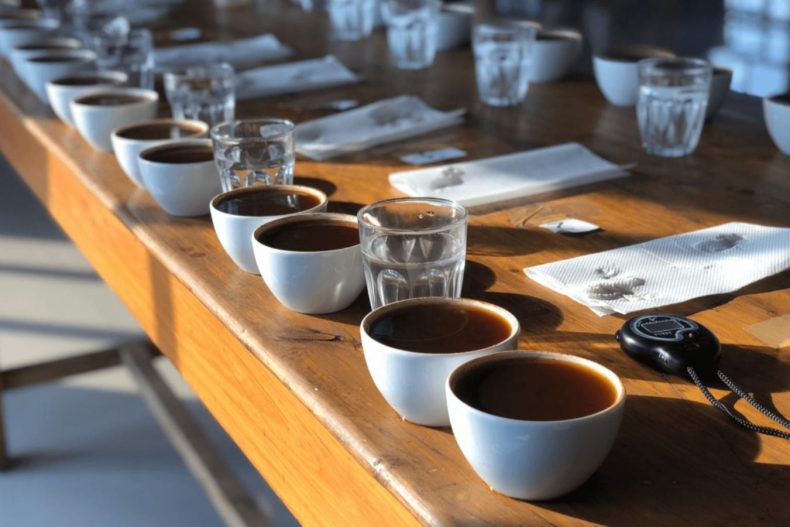Gianmarco emphasizes the importance of linguistic precision in the sensory experience of tasting. He illustrates this by pointing out that while many people might have a general idea of what mint smells like, they may struggle to identify it when presented with an actual mint leaf. To enhance this skill, Gianmarco suggests a deliberate practice of smelling various herbs and flowers, assigning names to their scents. He also advocates for tasting sessions alongside more experienced professionals, as their guidance can help articulate the myriad perceptions that arise during tasting.
Moreover, Gianmarco stresses the necessity for tasters to venture beyond their comfort zones and explore unfamiliar coffees. He believes that true tasting proficiency extends beyond mere judgments of good or bad; blind cupping sessions are essential for uncovering nuanced qualities that distinguish one coffee from another, such as body, texture, and flavor profile.
Manuel Fernando echoes the importance of blind analysis, emphasizing the need to eliminate bias by using codes rather than revealing the origin or producer of the coffee being tasted. He also highlights the significance of nutrition and hydration, as these factors can influence a taster’s perception and objectivity.
Additionally, Manuel Fernando notes the impact of time on coffee and advises tasting both freshly roasted and aged beans to fully understand the range of flavors and characteristics. He stresses the necessity of defining clear objectives for each tasting session, whether it be sourcing from a specific producer, evaluating export batches, or assessing finished products.
Dulce Elena emphasizes the importance of calibration in tasting, recommending regular sessions with a panel of expert tasters to maintain consistency and accuracy. She underscores the necessity of familiarizing oneself with the defects of coffee, as overlooking subtle flavors or flaws can result from a lack of experience in evaluating different processing methods.
What mistakes should tasters avoid?
Manuel Fernando emphasizes the critical errors tasters must avoid, including personal biases and the tendency to judge coffee solely based on its roast level. Additionally, he warns against forming definitive profiles after a single cupping session, as replicability relies on the consistency of multiple variables over time.
Moreover, Manuel Fernando underscores the importance of clear descriptors and a shared lexicon among tasters. He advocates for humility in forming opinions, suggesting that a coffee’s profile should emerge from a collective synthesis of diverse perspectives rather than individual assertions.
Gianmarco observes a common misconception among tasters, noting that many approach cupping as a test of their own abilities rather than a genuine exploration of the coffee itself. He emphasizes the importance of focusing on the coffee’s inherent qualities rather than personal performance.
Lastly, Dulce Elena suggests practical methods for skill improvement, such as daily coffee tasting and engaging in sensory exercises like triangulations and aroma evaluations. She recommends exploring flavors in various foods and familiarizing oneself with common coffee defects to refine sensory acuity.
Projections and challenges for tasters in the coming years
Manuel Fernando highlights a prevalent issue in the coffee industry: the proliferation of processes with localized and sometimes misleading names. He identifies access to accurate information as a significant challenge for tasters, emphasizing the importance of training in environments where comprehensive data is available.
Moreover, Manuel Fernando notes the growing popularity of coffees processed using methods such as natural, honey, and washed, often accompanied by diverse fermentation techniques that can alter flavor profiles through additives unrelated to coffee. He stresses the need for rigorous evaluation informed by knowledge of the specific processing method employed.
He further emphasizes the evolving expectations of consumers, who seek both novel experiences and transparency, safety, and traceability in their coffee choices. As tasters, he asserts, it is incumbent upon them to ensure these standards are met.
Similarly, Dulce Elena anticipates forthcoming regulations and underscores the necessity for tasters to adapt and remain informed about emerging trends in coffee processing and flavor profiles. She underscores the critical role of ongoing training and education in meeting this challenge.
Gianmarco identifies the surge in experimentation with fermentation techniques and the emergence of new cupping profiles as a significant challenge for tasters. He recounts experiences where tasting panels have divergent opinions on the same coffee, reflecting the subjectivity inherent in taste evaluation.
He acknowledges the complexities involved in assessing coffees with unconventional flavor profiles, where what one taster perceives as a virtue, another may consider a defect. He urges tasters to recognize the diversity of consumer preferences and remain open-minded in their evaluations, emphasizing that personal taste does not necessarily dictate a coffee’s universal appeal.
FAQS:


